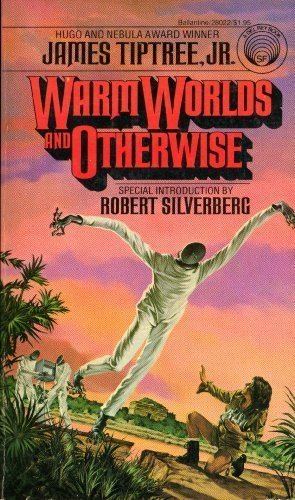8.2 /10 1 Votes8.2
Media type Print Originally published April 1973 | 4.1/5 Goodreads Publication date April 1973 | |||||||||||||||||||||||||||||||||
 | ||||||||||||||||||||||||||||||||||
Similar James Tiptree Jr books, Nebula Award for Best Short Story winners, Other books | ||||||||||||||||||||||||||||||||||
"Love Is the Plan the Plan is Death" is also the name of an album by James Blackshaw.
Contents
"Love Is the Plan the Plan Is Death" is a short story by James Tiptree, Jr. which won a Nebula Award for Best Short Story in 1973. The novella first appeared in the anthology The Alien Condition, edited by Stephen Goldin, published by Ballantine Books in April 1973.
Plot
Moggadeet is a spider-like creature who has decided that, since he is intelligent, he will resist the instincts which lead his species through an exceptionally violent life-cycle which they call "the Plan" — including a drop in intelligence during winter.
As the years go by, Moggadeet gradually realizes that the winters are becoming longer and longer, and it is more and more difficult for him to resist becoming an unintelligent animal. In summer, he devises a plan to break out of the cycle: he captures and stockpiles prey for himself and his mate Lillliloo to eat during the winter, while holed up in a relatively warmer zone, in an attempt to keep his intelligence. However, after Lillilloo grows bigger than Moggadeet, she ends up eating him. This too turns out to be part of the Plan, which Moggadeet was unable to escape.
Collections
"Love is the Plan the Plan is Death" has appeared in the following collections:
Reception
"Love is the Plan the Plan Is Death" won the 1974 Nebula Award for Best Short Story and was nominated for the Hugo Award for Best Novelette, and was ranked 3rd in the Locus Magazine poll for Best Short Fiction.
Kirkus Reviews called it "highly lauded", while Lewis Call described it as a "bizarre but beautiful alien love story", emphasizing the contrast between Moggadeet's relationship with Lillliloo, and BDSM. The Washington Post considered that the "image (of) an intelligent species whose biological imperatives compel females to devour their mates (...) is dramatized with the directness of an arrow striking a bullseye".
